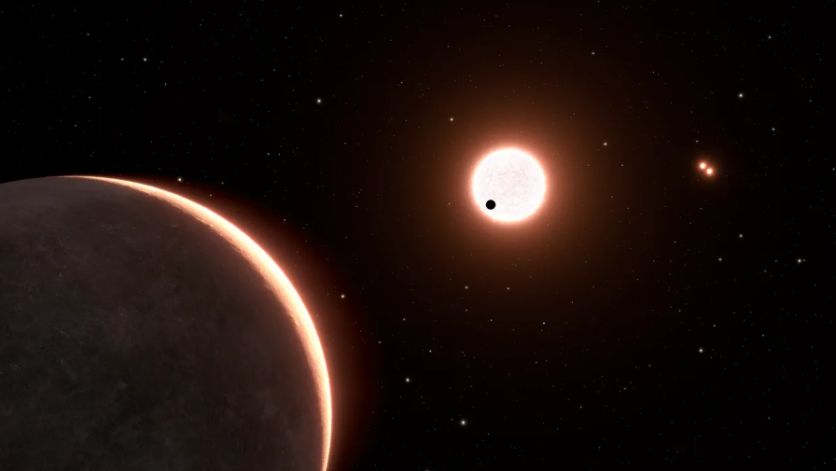NASA's Hubble Space Telescope has successfully determined the size of the nearest Earth-sized exoplanet, named LTT 1445Ac, which regularly transits across its host star. This could open up avenues for subsequent studies aiming to unravel the mysteries of its atmosphere.

Earth-Sized Exoplanet
Discovered by NASA's Transiting Exoplanet Survey Satellite (TESS) in 2022, the exoplanet posed challenges due to uncertainties in its orbital geometry.
TESS lacked the optical resolution to precisely measure the planet's size, leaving the possibility of a grazing transit, where the planet barely skims the star's surface, providing an inaccurate diameter estimate.
Hubble's observational prowess overcame this limitation, confirming a full transit of LTT 1445Ac across its star's disk. The accurate measurement revealed the exoplanet's diameter to be only 1.07 times that of Earth, establishing it as a rocky world akin to our own, with similar surface gravity.
However, with a scorching surface temperature of about 500 degrees Fahrenheit, the conditions are inhospitable for known life forms.
LTT 1445Ac orbits the star LTT 1445A, part of a triple star system located 22 light-years away in the Eridanus constellation. The star hosts two larger planets, and the alignment of the system's stars suggests a coplanar configuration, including the known planets.
Emily Pass from the Center for Astrophysics | Harvard & Smithsonian highlighted the significance of transiting planets for atmospheric characterization through spectroscopy, expressing anticipation for follow-up observations with both Hubble and the James Webb Space Telescope.
"Transiting planets are exciting since we can characterize their atmospheres with spectroscopy, not only with Hubble but also with the James Webb Space Telescope," Pass said in a press statement.
"Our measurement is important because it tells us that this is likely a very nearby terrestrial planet. We are looking forward to follow-on observations that will allow us to better understand the diversity of planets around other stars," she added.
The findings of the team were published in The Astronomical Journal.
Read Also : NASA Hubble Discovers Saturn's Ring System Heats Planet's Atmosphere-A Never-Before-Seen Phenomenon!
NASA's Webb and Hubble Power Up Together!
In a related story, NASA's James Webb Space Telescope and Hubble Space Telescope collaborated to capture a mesmerizing image of the MACS0416 galaxy cluster, located about 4.3 billion light-years away.
This collaborative effort presents one of the most detailed views of the universe, showcasing colliding galaxy clusters set to merge and create a larger cluster in the future. The panchromatic image combines visible and infrared light, revealing intricate details of galaxies within and beyond the cluster.
This collaboration allows astronomers to study sources with varying brightness over time, potentially influenced by gravitational lensing - a phenomenon where distant light sources are distorted and amplified.
Learn more about the telescope's power combination here.
Related Article : NASA's Hubble Space Telescope Captures 'Butterfly Nebula' In Stunning Motion | Fun Facts About This Beautiful Space Butterfly

ⓒ 2025 TECHTIMES.com All rights reserved. Do not reproduce without permission.




